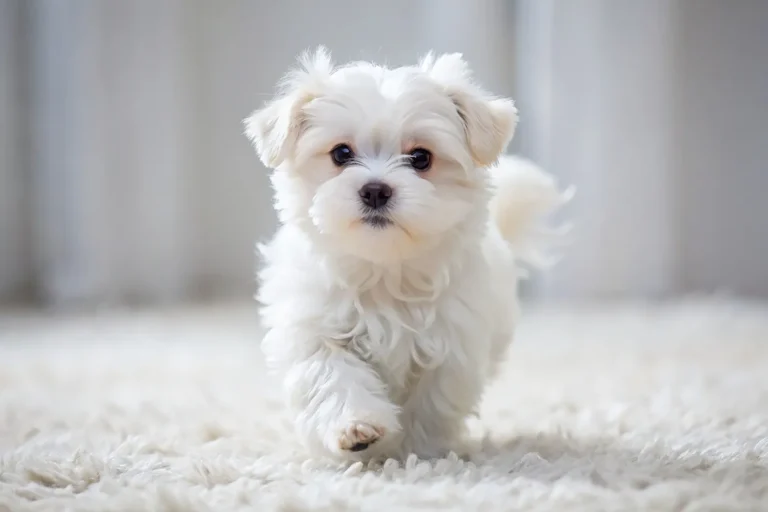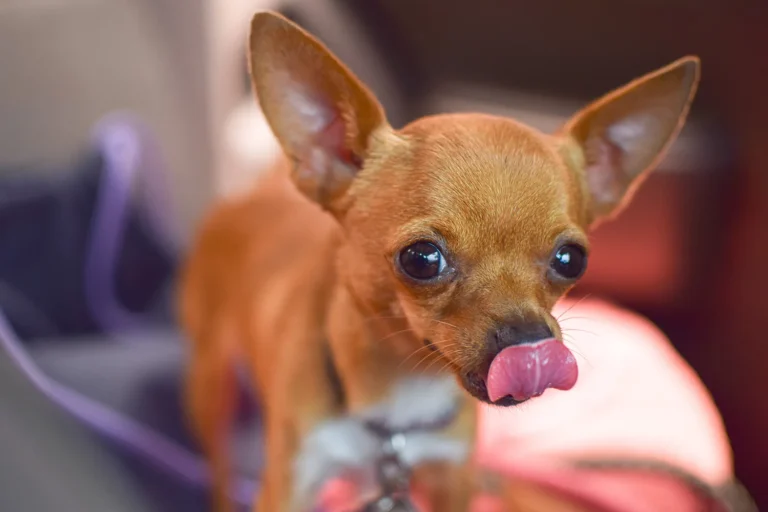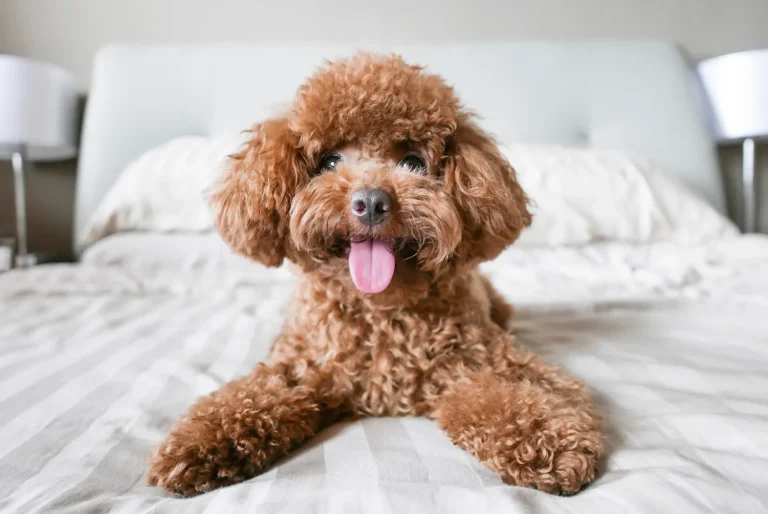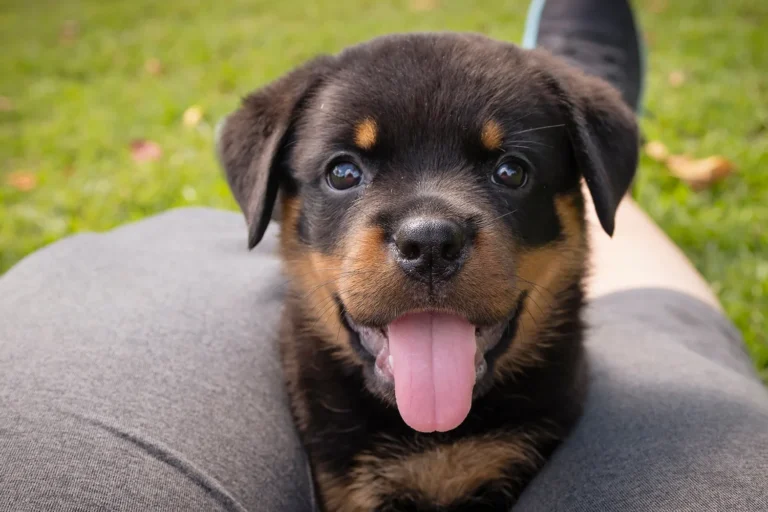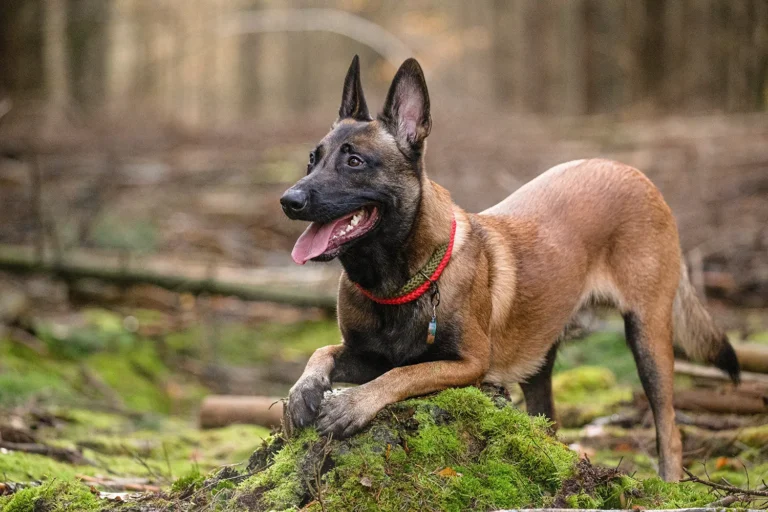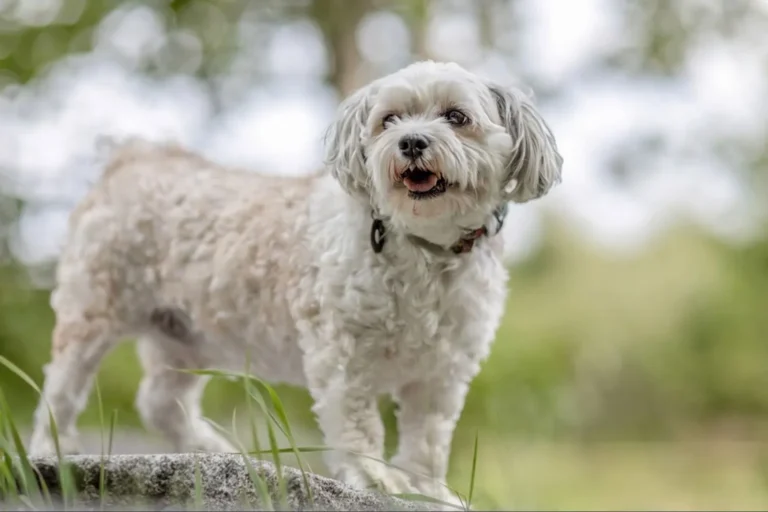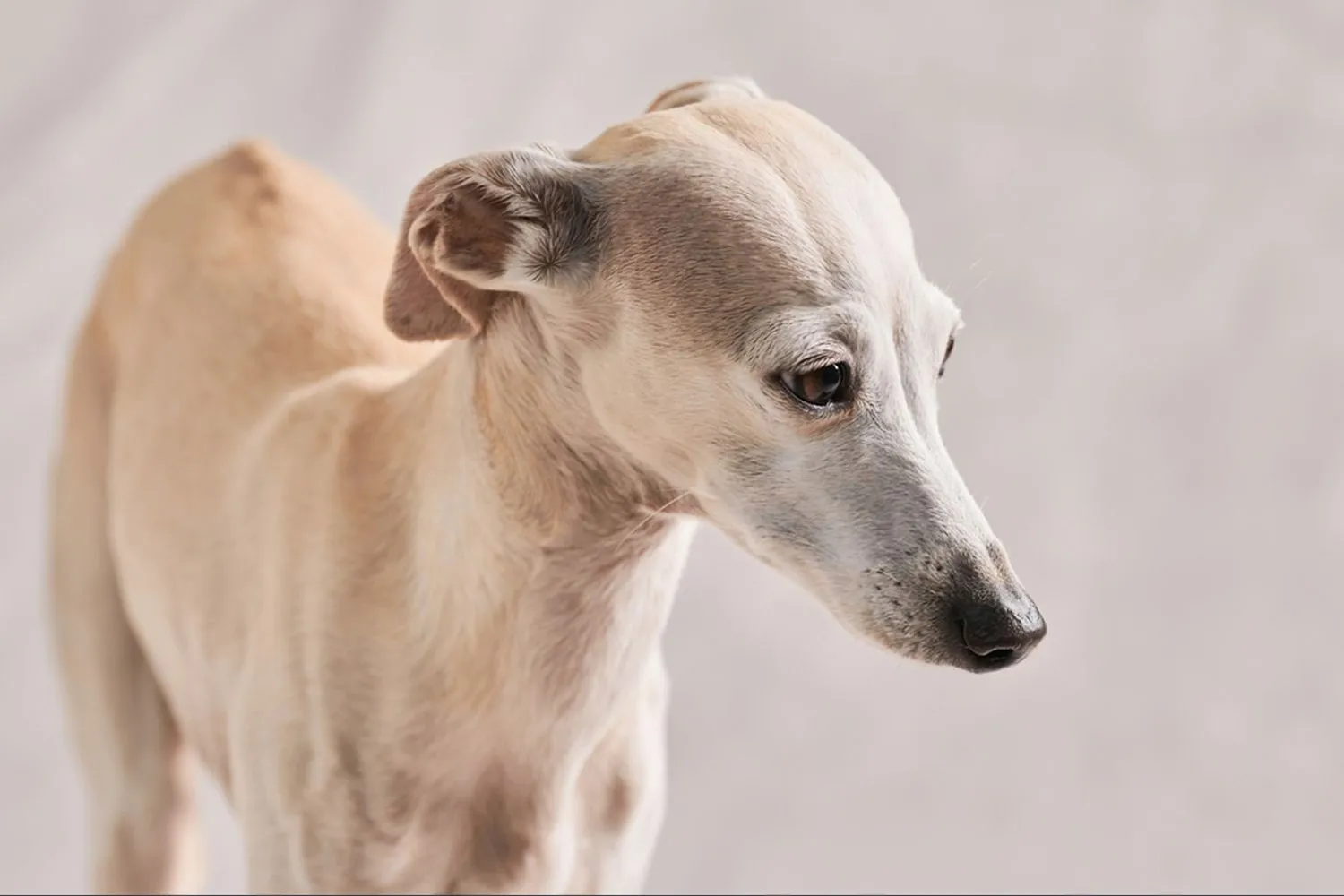
The Whippet is a lean, small to medium dog that looks like a pocket size greyhound. This purebred was bred to sprint; worldwide they’re celebrated on the track as the fastest dog for its size, and you can see it in that sleek, athletic build.
I remember my friend's Whippet exploding after a tossed toy, then curling up under a blanket five minutes later. Give them safe sprint time in a secure area and lots of cozy rest. A snug coat helps on chilly mornings, and a solid recall never hurts with such speedy legs.
History and Origin of the Whippet
The Whippet’s story begins in England, where clever breeders blended fast, graceful Greyhounds with feisty, hardworking terriers. The result was a sleek little speedster that looked like a small Greyhound and was nimble enough to hunt rabbits and other small game. In those early days they were nicknamed “snap dogs” for the quick way they could catch their quarry. Later, when the breed started catching the eye of wealthier dog fanciers, some Italian Greyhound was added to the mix, fine tuning that elegant, tapering outline we all recognize today.
Whippets weren’t just hunting partners they became the stars of a new pastime: racing. In the industrial towns of northern England, working families turned their free afternoons into “rag racing,” where Whippets chased a fluttering lure up a straight track. Affordable to keep and thrilling to watch, they earned the affectionate nicknames “the poor man’s greyhound” and “the poor man’s racehorse.” I once visited a fun run meet on a windy Sunday and watched a veteran Whippet named Pip explode off the line the moment a plastic bag zipped past. Even at ten years old, that sprinting instinct was alive and well.
By the 1800s, Whippets had crossed the Atlantic and quickly won hearts in the United States. The American Kennel Club recognized the breed in 1888, and enthusiasts eventually formed the American Whippet Club to promote racing, lure coursing, and responsible breeding. Interestingly, back in Britain, the English Kennel Club didn’t officially register the Whippet until 1891-fashionably late to the party, but better late than never.
Knowing this history helps make sense of the modern Whippet. They’re built for short, spectacular bursts of speed and have strong chase instincts, so secure spaces and a good outlet like lure coursing can make them blissfully happy. A breeder I chatted with in Yorkshire told me her grandparents ran their Whippets behind a bicycle to keep them fit; I prefer a safer fenced field and a flirt pole, but the spirit is the same. Give them a cozy bed for their lean bodies, a chance to sprint now and then, and you’ll be living with a little piece of English sporting history curled up on your sofa.
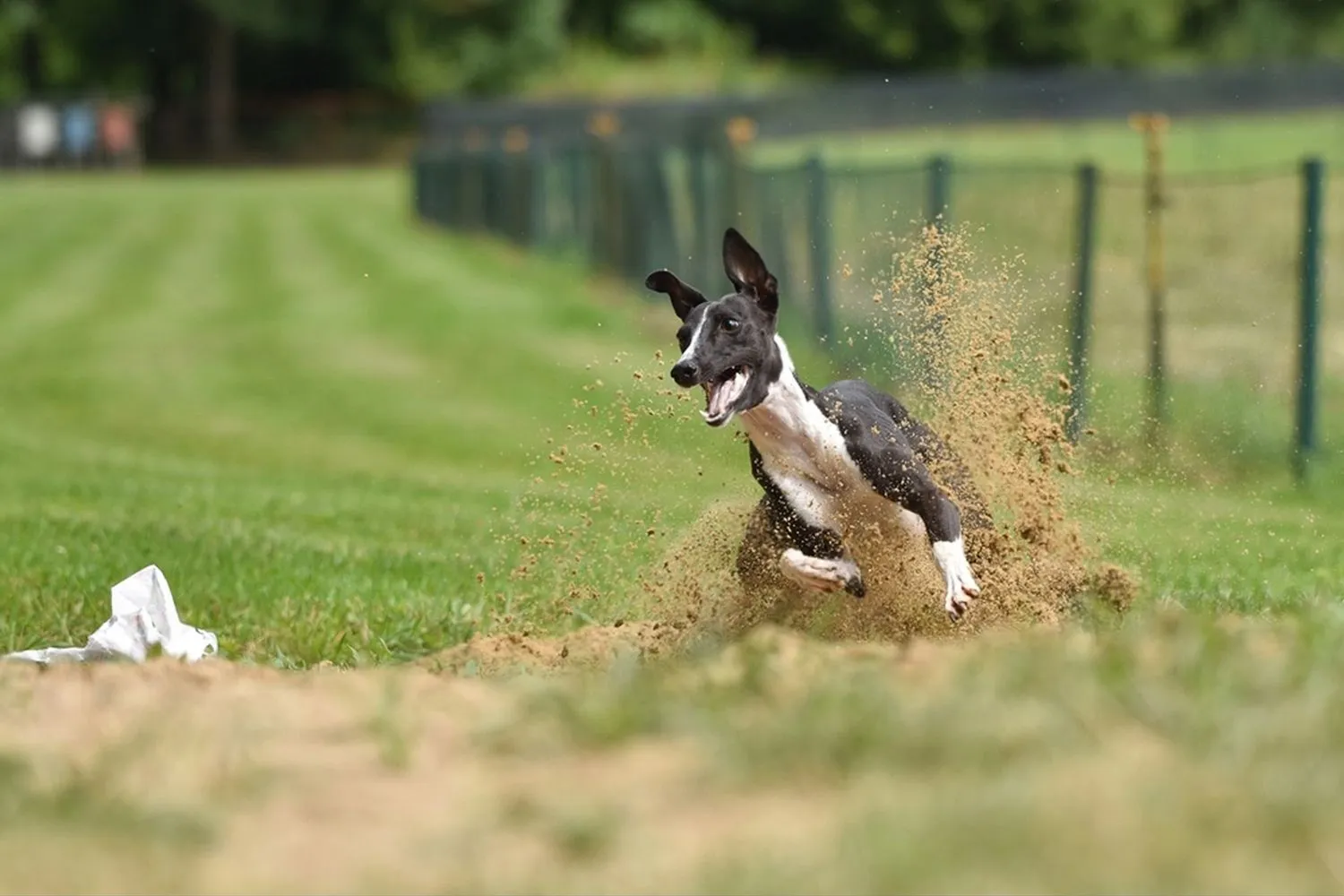
What Is a Whippet?
Picture a pocket sized greyhound and you’re halfway to understanding a Whippet. They were bred for speed, with long, slender legs, a deep chest, and a narrow, aerodynamic body that looks built for zooming. Despite their smaller stature, they’re surprisingly muscular, with tapering tails and those big, expressive eyes that seem to ask for just one more cuddle. I remember the first time I watched a Whippet sprint at the park one second she was next to me, the next she’d turned on a dime and was a tiny blur chasing a leaf like it owed her money.
What I love most is that Whippets are the perfect mix of lapdog and adventure buddy. At home they’re world-class snugglers, folding themselves into your lap like a warm croissant and disappearing under blankets the moment the thermostat dips. Outside, they come alive. They’re a great size for dog sports like lure coursing and agility, and an adult Whippet can make a wonderful running companion. They’re sprinters by design, but many comfortably join you for moderate distance runs once you build up together. I always suggest starting slow, watching for hot pavement or icy sidewalks, and avoiding extreme temperatures they’re not fans of either.
Their coats are short, soft, and silky, which makes grooming a breeze, but it also means they prefer warmth. A cozy sweater, a snug coat in winter, and a soft bed go a long way. My friend’s Whippet insists on burrowing under a throw blanket, nose poking out like a periscope. Because their skin is thin, I keep an eye out for scrapes after rambunctious play, and I make sure collars and harnesses fit comfortably.
Whippets come in a rainbow of colors, including brindle, fawn, blue, black, white, and all sorts of combinations no two seem to look quite the same. One little tip from experience: keep them on leash in open areas and secure your yard. Their chase instinct is real, and a squirrel at 100 feet is basically an open invitation. Treat them kindly, give them room to sprint, and a couch to claim afterward, and you’ll have the best of both worlds: a gentle housemate and a gleeful outdoorsy pal.
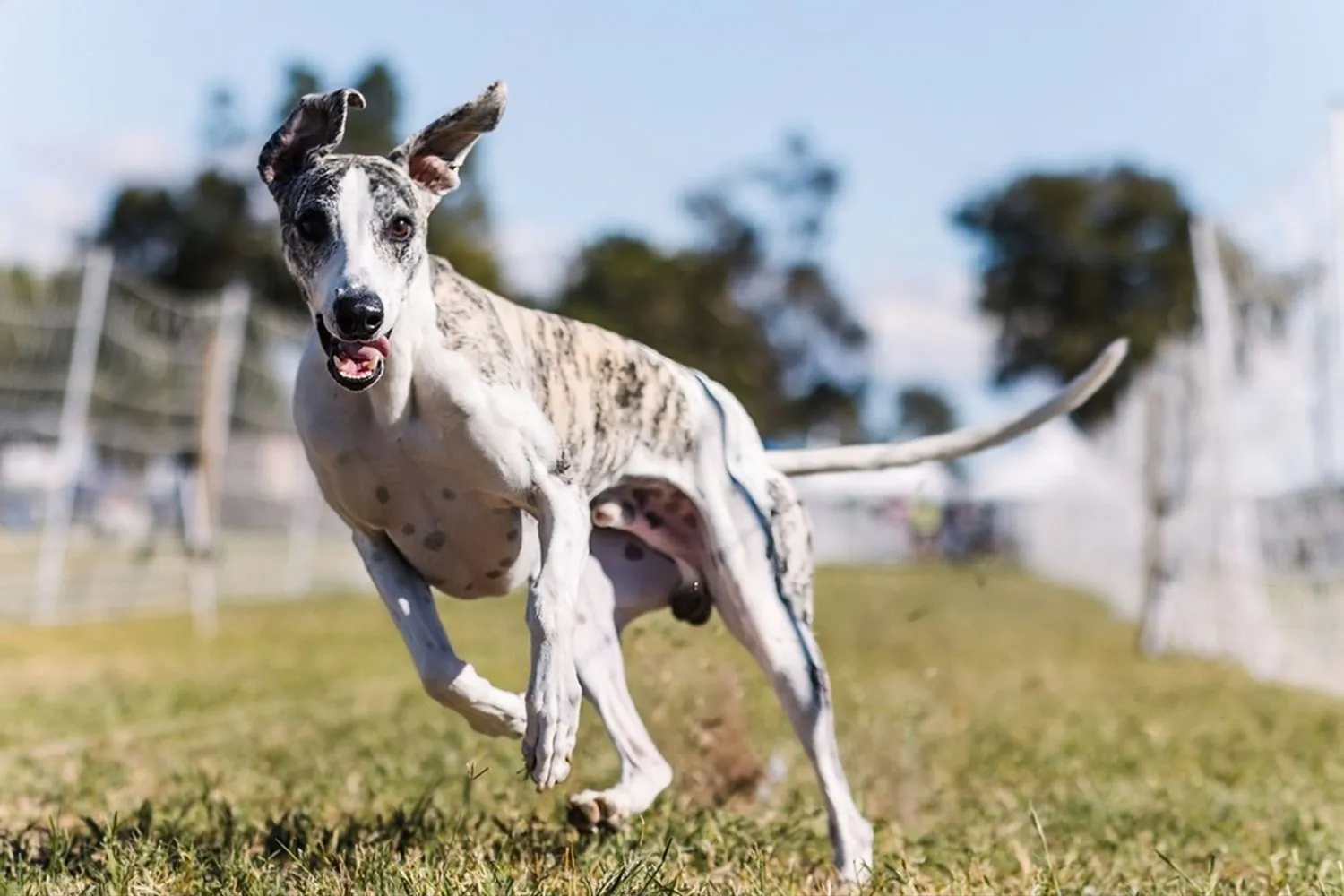
Who Is a Whippet Best For?
If you’re looking for a calm, elegant companion who’s as happy in a city apartment as a suburban home, a Whippet might be your perfect match. They’re true sprinters, not marathoners give them a few short bursts of speed in a fenced area or a quick game of fetch, and they’re content to snooze the rest of the day. I used to take my friend’s Whippet to a quiet tennis court for five minutes of zoomies before dinner; after that, he’d curl up like a cat and barely move until bedtime.
Inside, Whippets are gentle, quiet roommates when their minds and bodies get a little stimulation. Think short walks, a flirt pole session in the living room, then a puzzle toy while you answer emails. They adore soft places and warm laps. They get cold easily really easily so plan on sweaters, cozy blankets, and cushy beds. In my drafty old apartment, I kept a basket of fleece throws by the couch, and my Whippet houseguest learned to burrow in like a little burrito. Hard floors? Expect a dramatic sigh and a not so subtle attempt to steal your spot on the sofa or sneak under the duvet.
Whippets make loyal friends, not bodyguards. If you want a watchdog, this isn’t your breed; most will greet strangers with a wag and then politely request the comfiest cushion. They’re lovely with families and usually do great with other dogs their gentle play style fits nicely with polite canine pals. Because they’re sighthounds with a strong instinct to chase, they’ll need careful introductions and training around smaller pets. I’ve seen success with slow, supervised meet and greets, baby gates, and rock-solid “leave it” and recall. Some Whippets can live peacefully with confident cats; others do best without pocket pets or birds. Know your dog, go slowly, and set everyone up for success.
Bottom line: a Whippet suits someone who wants a low key, affectionate companion, enjoys a couple of short, speedy exercise sessions a day, and doesn’t mind sharing the sofa or the blankets. Keep them warm, give them soft places to land, and you’ll have a devoted shadow who sprints like lightning and cuddles like a pro.
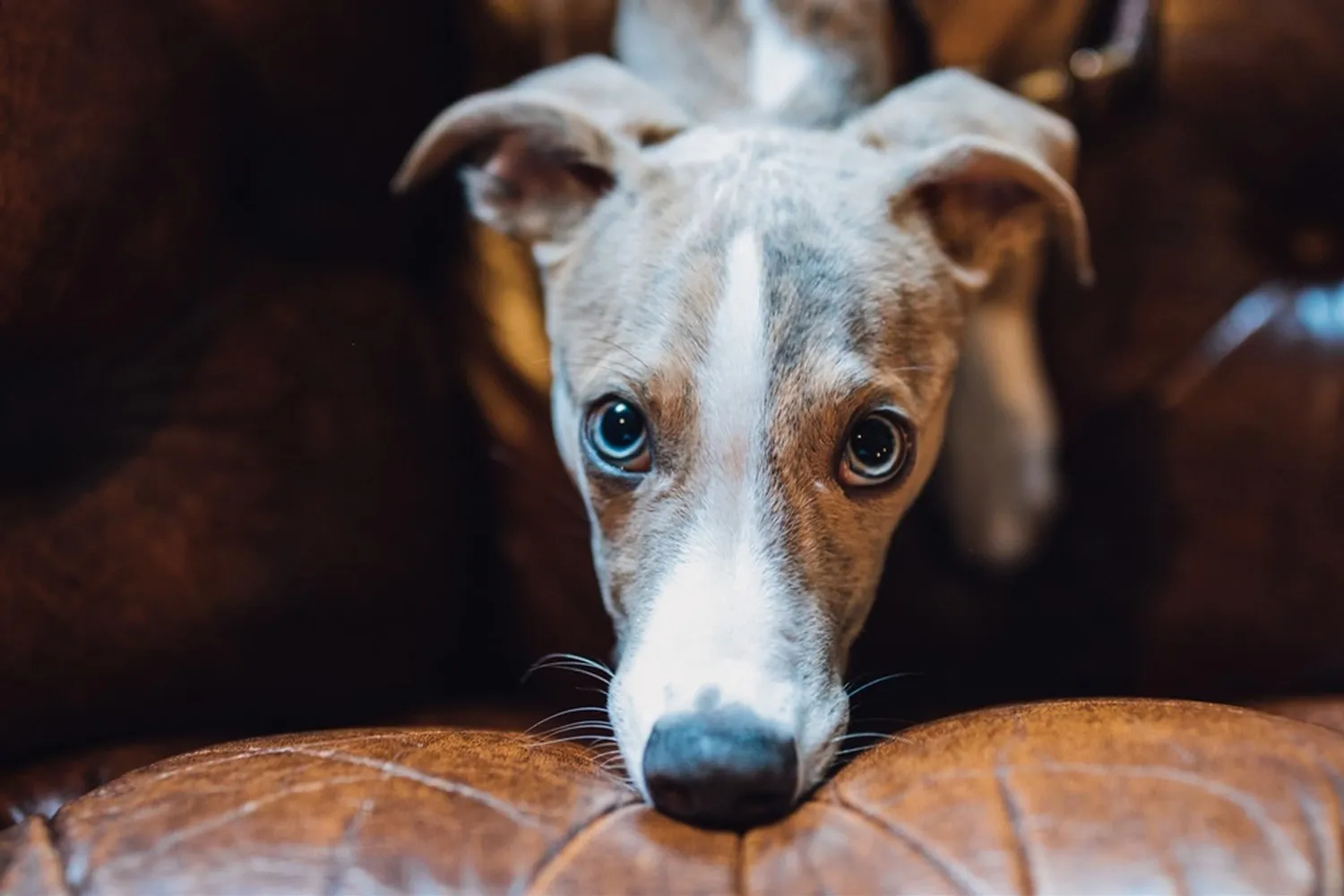
Whippet Grooming and Shedding
The silky coat on a Whippet is wonderfully low maintenance, which is one of the reasons I adore them. They’re low to moderate shedders, and most of the time a quick once over with a rubber curry brush or grooming mitt is all it takes to sweep away loose hairs. I keep a mitt by the door and give a fast brush after walks two minutes and it looks like I spent an hour. During seasonal changes (spring and fall), I might brush a bit more often. A damp microfiber cloth or grooming wipe is great for a fast freshen up, and a lint roller on the couch will become your best friend.
Baths are simple and only needed when they’re dirty or smelly. Whippets have delicate skin and not much natural oil, so go easy on the shampooing use a gentle dog shampoo, lukewarm water, and rinse thoroughly. I learned to keep a warm towel ready, because after a bath my friend’s Whippet, Lila, would do the zoomies straight into her bed if I didn’t dry her quickly. While you’re drying, do a quick once over for any little nicks or scrapes; that sleek skin can be a bit sensitive.
Nails need regular attention every week or two, or whenever you hear that clickety clack on hard floors. I prefer a nail grinder because it’s easier to avoid the quick, but clippers work fine if you take it slow. Lots of treats and calm praise turn it into a fuss free routine. Don’t forget the dewclaws if your Whippet has them. Ears should be checked often; use a proper dog ear cleaner on a cotton ball and only clean what you can see never dig deep. If you notice redness, a bad odor, or your Whippet is shaking their head, it’s time to call the vet.
With a light brush, an occasional bath, tidy nails, and clean ears, your Whippet will stay sleek, comfy, and couch ready. Honestly, it’s one of the easiest grooming routines out there and a sweet little way to bond each week.
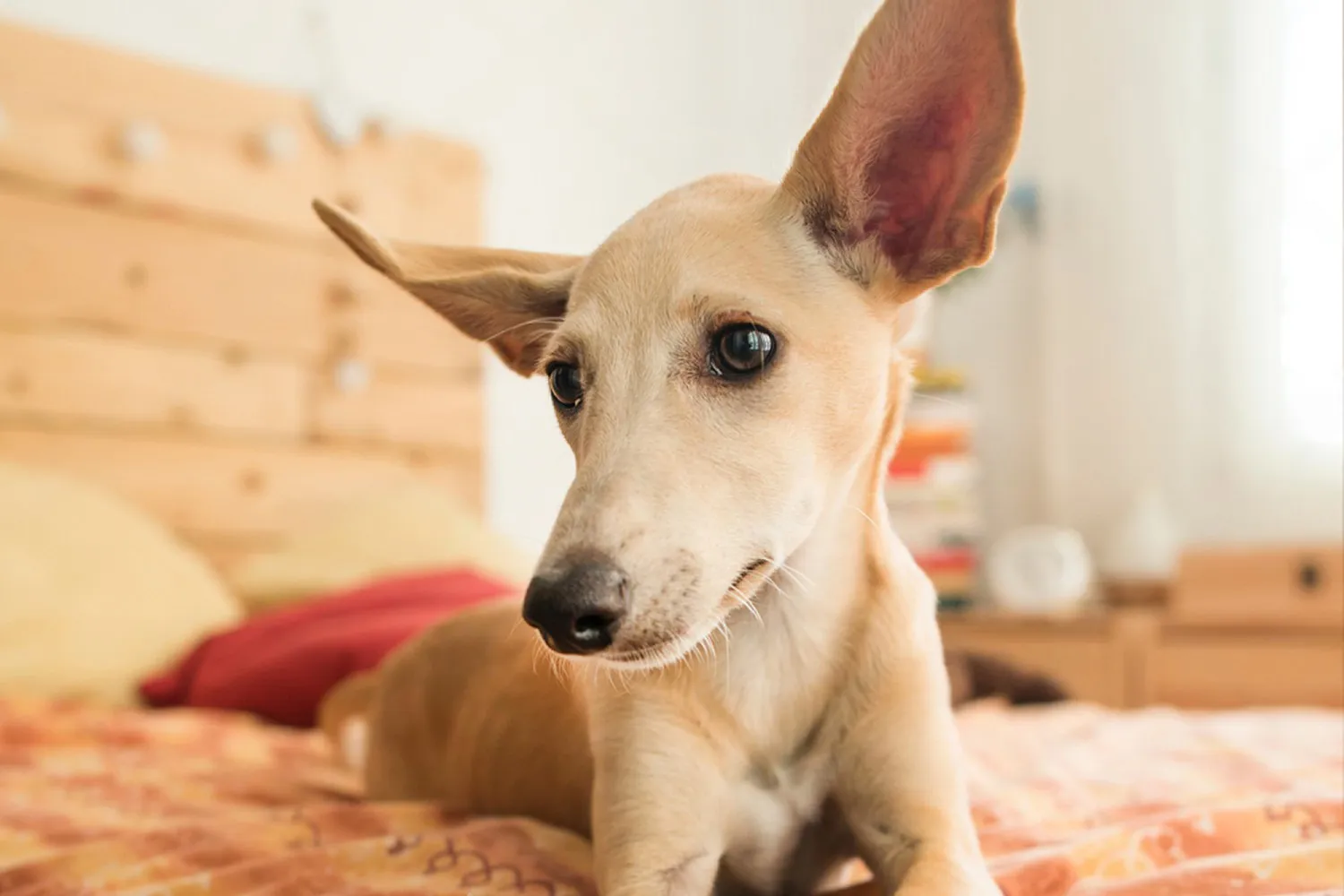
Do Whippets Bark a Lot?
If you’re hoping for a peaceful roommate, a Whippet is a pretty safe bet. They’re famously quiet and a bit on the shy, sensitive side, so random, repetitive barking isn’t really their style. Most Whippets would rather curl up like a cinnamon roll on the couch than announce every passing leaf. My friend’s Whippet, Poppy, lived in a busy city apartment and I swear I heard her bark maybe twice in a year once at a doorbell on TV and once when she zoomed straight into a mirror and startled herself. That calm nature is a big reason they tend to do so well in apartments and close quarters.
Now, they’re still dogs, so you’ll hear a bark if something truly needs your attention an unexpected knock, a sudden commotion, or pure excitement during a case of the zoomies. I like to teach a “thank you” cue: let them give one or two alert barks, then cheerfully say “thank you” and reward them for quiet. It keeps their watchdog instincts useful without turning them into neighborhood town criers. A bit of exercise and mental enrichment also goes a long way; a well run Whippet is usually a whisper at home. One little heads up: many Whippets are more likely to “woo woo” or whine softly than to bark. It’s their way of narrating life quietly. If you want a serene companion with occasional commentary, a Whippet fits the bill beautifully.
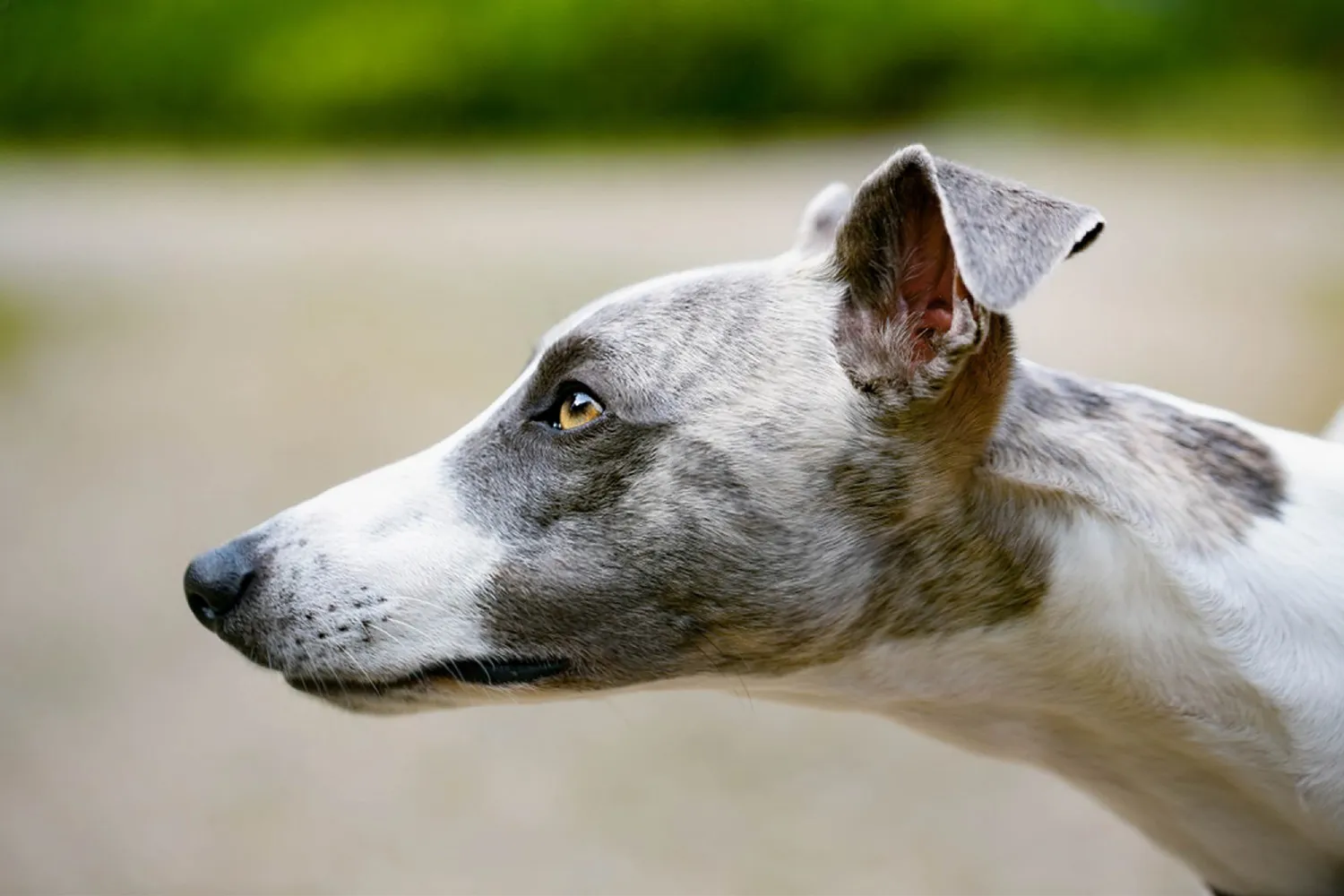
What Is the Average Weight and Height of a Whippet?
Whippets are wonderfully lean, aerodynamic little athletes. Most adults tip the scales at about 11 to 18 kilograms (24 to 40 pounds) and stand roughly 45 to 55 centimeters (18 to 22 inches) tall at the shoulder. Males often land toward the top of those ranges, females a bit lower. My boy Milo hovers around 13.5 kg and about 50 cm, and every time the vet weighs him I’m reminded just how light these dogs are for their size.
Because they’re built for speed, a healthy Whippet will look slim. Seeing a hint of rib and a neat “tuck” behind the ribs is normal. I like to do a quick body check each week: run your hands over the ribs (you should feel them without digging), look for a defined waist from above, and watch that the chest is deep but not bulky. If you’re tracking weight at home, the bathroom scale trick works great step on with your dog, then subtract your own weight. For height, have them stand square, rest a book lightly on the withers (top of the shoulders), and measure from the book to the floor.
Puppies usually reach close to their adult height by around 8 to 12 months and fill out a bit more muscle by about 18 months. Don’t stress over a few seasonal pounds mine tends to gain a smidge in winter and lean out once sprint season starts again. When buying collars or harnesses, remember Whippets have slim heads and deep chests; a martingale style collar often fits best. And if you’re ever in doubt about whether your Whippet is at a good weight, your vet can help you fine tune feeding and exercise so they stay sleek, speedy, and happy.
https://en.wikipedia.org/wiki/Whippet
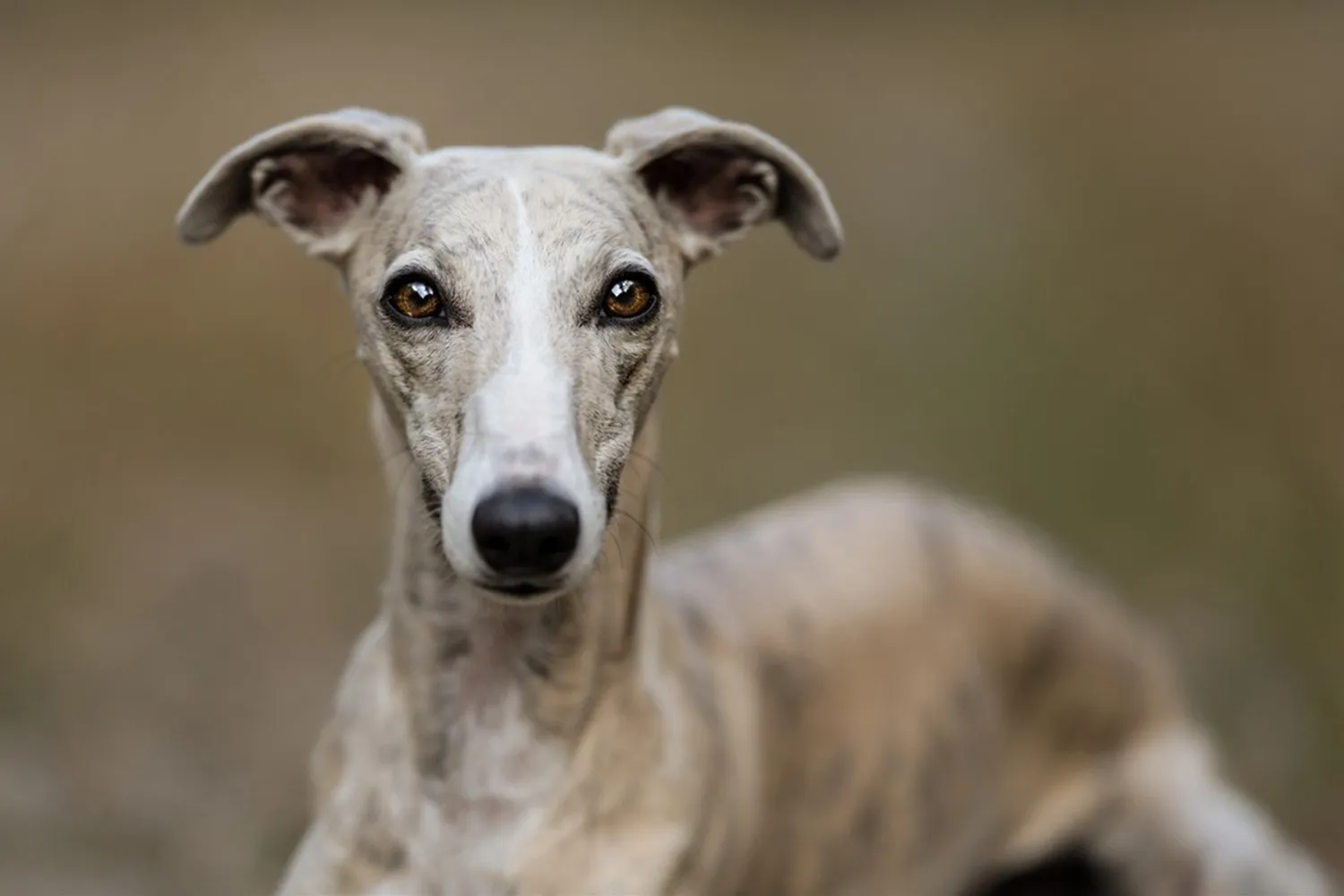
Are Whippets Easy to Train?
Whippets are wonderfully bright dogs, and when you keep things upbeat and simple, they soak up new skills like little sponges. Short, cheerful sessions with high value treats and a happy voice work far better than anything stern. They can be naturally shy, though, so early socialisation is your secret weapon. I like to think of it as “building their confidence bank” puppy classes, quiet trips to the park, meeting calm people and friendly dogs, and hearing everyday sounds in low stress doses. I remember taking a young Whippet to a farmers’ market for a five minute stroll, rewarding every curious sniff. The next week, we stayed ten minutes. By week three, she was sashaying past the flower stall like she owned the place.
Because Whippets are sensitive souls, keep training gentle. Teach the basics sit, down, touch, and a solid recall in small bursts. If they get worried, lighten the mood and try again later. And don’t be surprised if greetings get a little… theatrical. These dogs adore their people. Mine used to pogo at the door like a spring loaded deer. What helped was teaching a “go to your mat” game and rewarding calm, four on the floor hellos. We practiced with family first, then a few saintly friends who didn’t mind rehearsing the routine.
A quick word about crates: many Whippets don’t cope well with being shut in one, and some can feel claustrophobic or anxious if left unattended. I learned this the hard way ten minutes in a closed crate, and my usually chill pup was trembling. We switched to a gated room with a cozy covered bed and it made all the difference. If you want a den like space, leave the crate door open so it’s a choice, not a lockup. Pair alone time practice with gentle departures, a safe chew, and calm returns.
As for other pets, start early and go slow. Teach polite behavior around cats and small animals, but remember that Whippets have a strong hunting instinct, so supervision is non negotiable. I use baby gates, leashes for introductions, and high perches for feline roommates. They tend to thrive with other dogs of similar temperament other sighthounds often make great companions.
And yes, they were bred to run. Give them daily chances to sprint short, thrilling bursts in a secure area and you’ll have a velvety couch companion the rest of the day. Many love sports like lure coursing, dock diving, and agility. Mine lights up at the lure field, then snoozes like a champ afterward. In the end, Whippets are easy to train when you honor who they are: sensitive, speedy, affectionate, and eager to please especially when you make training feel like a game.
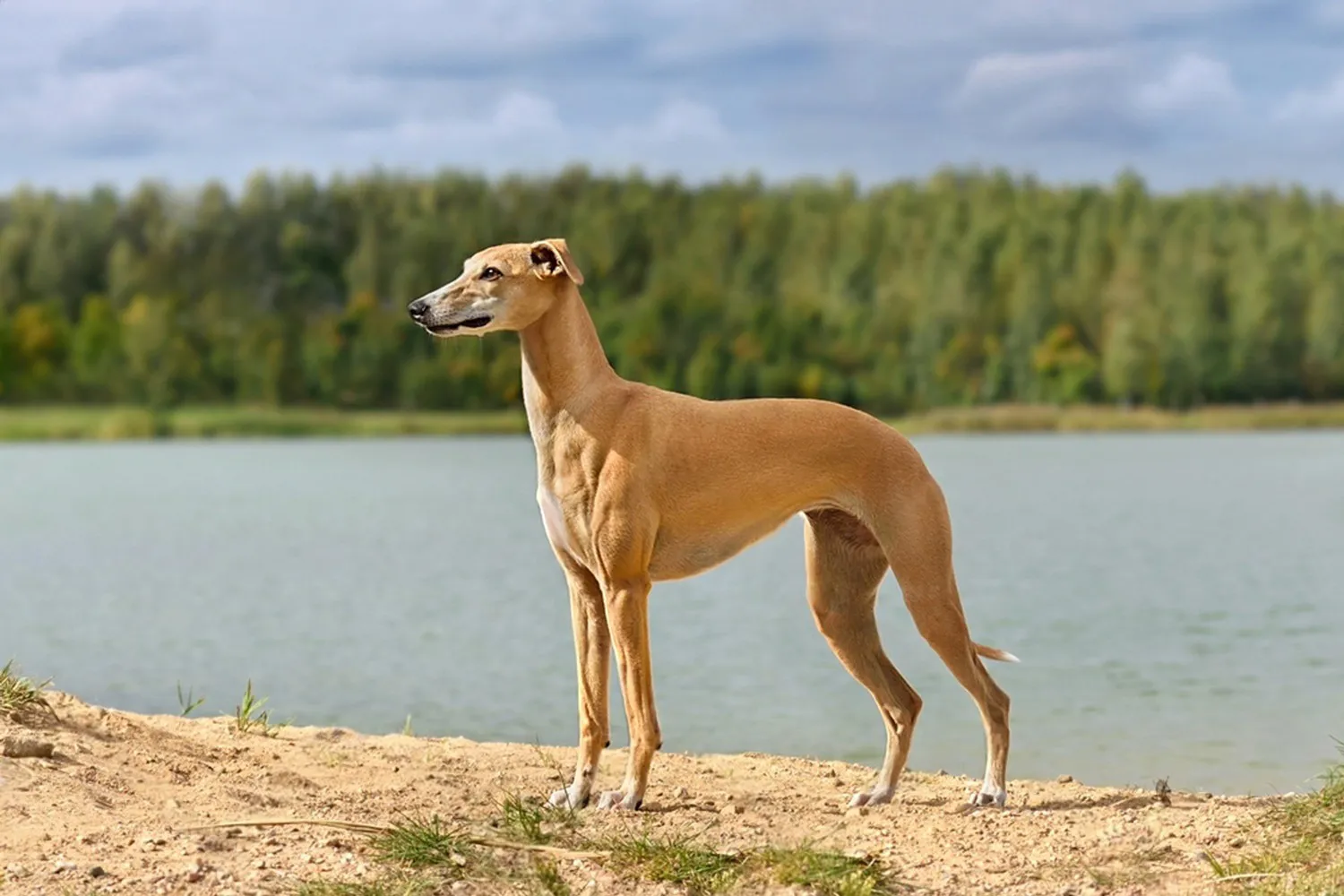
How Do Whippets Behave? Temperament and Personality
There are really two speeds to a Whippet: blur and blanket. One minute they’re a sleek little rocket doing figure eights in the yard, and the next they’re folded into your lap like a warm croissant. My neighbor’s Whippet, Pip, will sprint after a tossed lure like he’s in the finals, then pad inside and melt against my leg as if the floor is lava and humans are furniture. Around the house, they’re typically quiet, calm companions gentle hounds who love nothing more than a soft spot and their favorite person. They tend to bond closely, and once they’ve chosen you, prepare to be shadowed from room to room by a very elegant Velcro dog.
Outdoors, that hound heritage shows. Whippets are sight driven and quick to chase any squirrel, rabbit, or fast moving leaf that dares to sprint by. I learned the hard way, years ago, that a sturdy fence or a leash isn’t optional it’s essential. They’re smart and can be very obedient, but a darting critter can flip their instinct switch in an instant. I like to channel that chase drive with a flirt pole or short games of fetch in a secure area, followed by puzzle toys inside to settle the mind. They respond beautifully to gentle, upbeat training; with these sensitive dogs, a soft voice and clear routine go much farther than any heavy handed approach.
With people they know, Whippets are affectionate, cuddly, and playful. With strangers, many are polite but a touch reserved think “introvert at a party” energy. When I first met a friend’s Whippet, I sat down and ignored her for a minute, and she eventually crept over, decided I was safe, and tucked her nose under my hand. That same sensitivity means they can struggle with alone time. When I dog sat a Whippet named Juniper, a predictable routine, a cozy crate with a blanket that smelled like her family, and calm, low key departures made a world of difference. Start with short practice absences and build up; don’t make a big production out of goodbyes. Give them your presence when you’re home, a safe space when you’re not, and just enough sprint time to keep their zoomies satisfied and you’ll have a loving, loyal companion who’s as easygoing on the couch as they are breathtaking in motion.
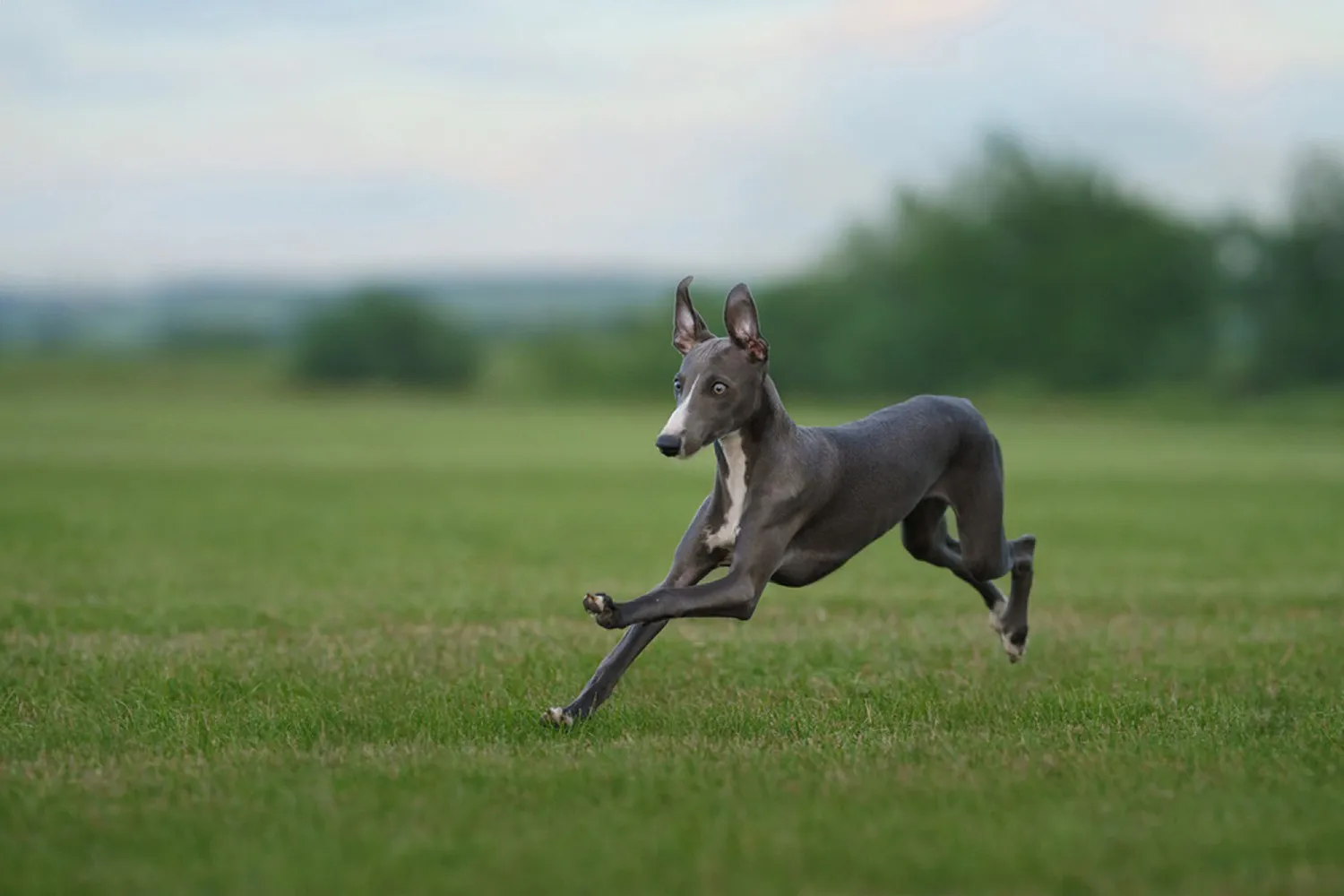
Do Whippets Have Common Health Issues?
Short answer: they can, but good breeding and smart care go a long way. Responsible breeders stick to kennel club standards and health screening, which helps reduce the chance of passing on problems. When I was looking into Whippets, a breeder showed me her health test results folder before I even asked music to my ears and a good sign you’re in the right place.
Like many hounds, Whippets are prone to a few hereditary conditions to keep on your radar:
– Von Willebrand’s Disease: This is a clotting disorder, so even small cuts can bleed more than you’d expect. If your Whippet ever has unusual nosebleeds or bleeds a lot after a nail trim, call your vet. I keep styptic powder in my grooming kit just in case learned that after one overly enthusiastic clip on my friend’s Whippet, Willow.
– Progressive Retinal Atrophy (PRA): This affects the retina and can lead to blindness over time. Early clues can be night blindness or bumping into furniture in low light. Annual eye exams with a veterinary ophthalmologist are a smart habit, and many breeders screen for eye issues and use genetic tests when available. If vision changes do happen, dogs adapt better than you’d think keeping furniture in the same place and using voice cues helped my neighbor’s senior Whippet stay confident.
– Anesthesia sensitivity: All sighthounds are sensitive to anesthesia. If your Whippet needs a procedure, choose a vet who’s sighthound savvy. I always ask about pre op bloodwork, tailored drug choices, careful warming, and close monitoring. A little extra planning makes recovery smooth.
– Dental issues: Whippets can build up tartar quickly, so make dental care part of the routine. I brush teeth a few times a week (daily is gold star level), use dog safe toothpaste, and throw in dental chews. Regular cleanings at the vet keep things on track and can help prevent bigger problems later.
A few parting tips from the trenches: ask breeders for proof of health screenings, keep up with yearly vet checks, and learn your dog’s “normal” so you spot changes early. I also set aside a small pet care fund because peace of mind is priceless when you love a whirl of legs and velvet ears known as a Whippet.
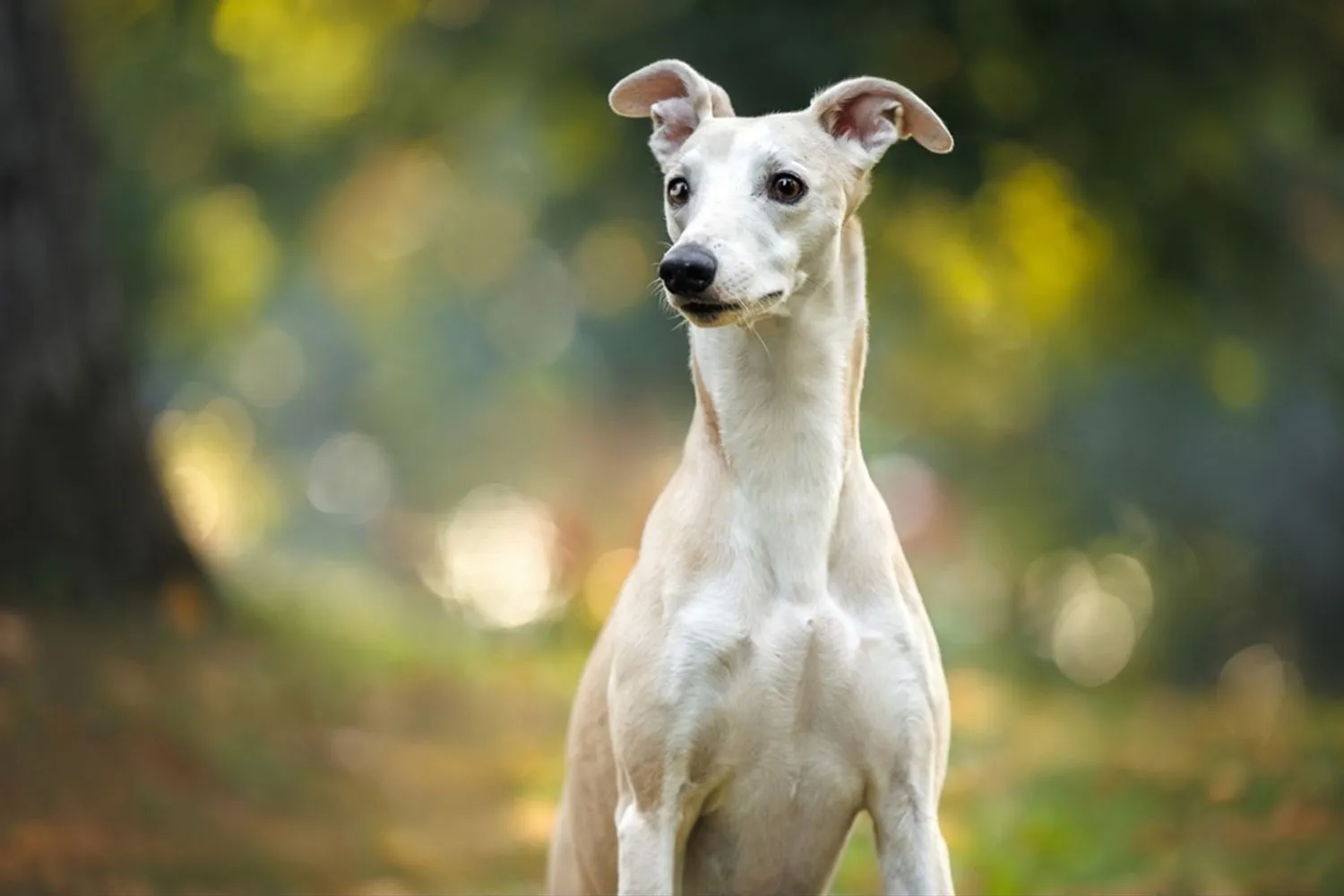
What Is the Lifespan of a Whippet?
Whippets are one of those wonderful breeds that seem to float through life with grace and a playful twinkle in their eye. Most Whippets live about 12 to 15 years, and with good care, it’s not unusual to see them happily cruising into their mid teens. My friend’s old boy, Jasper, turned 15 last spring he still does a single glorious burst of zoomies and then claims the sunniest spot on the couch like he’s earned it (and he has).
If you’re hoping to help your Whippet enjoy the fullest, healthiest life, think about the little things that add up. They’re lean, sensitive souls, so a warm sweater on chilly mornings and a comfy, cushioned bed can make a big difference. Regular, safe sprint time in a fenced area keeps their hearts happy, while daily strolls and puzzle toys keep their minds sharp. I’ve found that keeping them lean but not too skinny helps protect joints over the years. Consistent vet checkups, dental care, and keeping an eye on heart health are smart habits; my vet and I set reminders for annual wellness bloodwork and teeth cleanings, and it’s paid off.
As Whippets age, gentler routines help them thrive. Shorter, more frequent walks, non slip rugs, and a ramp to the car or couch can make senior life easier. I remember switching to a slightly softer kibble for my girl when she hit 12 and adding a touch of salmon oil her coat stayed glossy and she seemed more comfortable. With a cozy home, sensible exercise, and a bit of pampering, a Whippet’s golden years can be every bit as sweet as their sprinting youth.
How Much Should a Whippet Eat?
Whippets are wonderfully lean, so it can be tricky to judge portions by eye. As a general starting point, plan on about 3/4 cup of dog food per day, split into several small meals. Spreading it out helps keep their energy steady and is gentler on sensitive tummies. My friend’s Whippet, Willow, does best with breakfast and dinner, plus a tiny midday snack after a walk she stays trim and never gets hangry.
That 3/4 cup is just a guide. The right amount depends on your dog’s size, age, and how zoomy their days are. Puppies need more frequent, smaller meals; seniors might do better with slightly fewer calories but higher quality protein. On lazy, rainy days I shave a spoonful off the bowl, and on big adventure days I’ll add a sprinkle of kibble to make up for extra running. Different foods have different calorie counts, too, so I like to measure with a cup and occasionally weigh the food to be consistent. If you’re unsure, check in with your vet they’ll help tailor the portion and can show you how to use a body condition score so you know you’re on the right track. You should be able to feel ribs without pressing and see a nice waist tuck from above.
Treats are fine in moderation, but keep them small and account for them in the daily total to prevent weight gain especially if your Whippet skips daily exercise. Use training treats or break larger ones into crumb sized bites. As for table scraps, Whippets are world-class beggars, but it’s best to skip human foods altogether. Not only can they pack on pounds, some people foods are unsafe. One time my Whippet tried to charm me out of my sandwich crusts; I switched to offering a few green beans instead, and the puppy dog eyes disappeared fast.
A couple of extra tips from my routine: feed after a cool down, not right before a sprint session, and consider a slow feeder bowl if your Whippet hoovers their meals. Little habits like these keep that sleek, healthy silhouette without any drama.
Whippet FAQs
Is a Whippet ideal for a first time dog owner?
Absolutely. Whippets have an independent streak, but they’re gentle, easygoing dogs that respond beautifully to basic obedience training. They usually get along with people of all ages, and they’re just as content in a cozy apartment as they are zooming around a big backyard. The first Whippet I met lived in a tiny city studio; as long as he got his daily sprints and some cuddle time, he was the calmest neighbor in the building. If you’re new to dogs, think “short bursts of play, then couch potato.” A puppy class or a few sessions with a positive, reward based trainer can set you both up for success. Because Whippets are sighthounds, they can be very focused on moving objects, so I always suggest practicing recall on a long line and keeping them leashed or in a secure yard. Gentle guidance and a soft bed go a long way with this breed, and yes, they’re often all around perfect for first time owners.
Do Whippets suffer from separation anxiety?
Many do. Like their Italian Greyhound cousins, Whippets prefer to be near their people. If left alone for too long, they can become anxious or depressed and show distress by chewing, barking, howling, or trying to escape. While adult Whippets can technically be left alone for up to 8 hours if they have food and water, it can be incredibly distressing for them and isn’t recommended. I learned to ease mine into alone time with a slow routine: start with a few minutes away, then build up to longer stretches. A comfy crate or safe space, a worn T shirt that smells like you, and food puzzles can make a big difference. If you work long days, plan for a midday visit from a friend, a dog walker, or doggy daycare. One time I left a frozen treat puzzle and a playlist of soft jazz came back to a snoozing Whippet and an untouched couch.
Are Whippets hypoallergenic dogs?
No. Whippets aren’t hypoallergenic. Their short coats don’t shed heavily year round, but when warmer weather hits, they release more hair and dander to stay cool, which can bother allergy sufferers. If allergies are a concern, spend time with a Whippet before committing. I keep a small grooming glove by the door and give a quick once over after walks during summer; it cuts down on loose hair and keeps my floors much cleaner. Regular vacuuming, washing dog bedding, and a HEPA air purifier can help, but if you have significant allergies, a Whippet may not be the best match.
Will a Whippet need professional grooming?
Nope Whippets are delightfully low maintenance. A quick brush with a rubber brush or grooming glove a couple of times a week removes loose hair, and their short coats don’t need trimming. Baths every few months (or when they find a glorious mud puddle) are usually enough. I do a “Sunday spa” at home: brush, nail check, and a quick ear look over. Daily teeth brushing or at least every other day is important for this breed; I keep a toothbrush by the coffee maker so I don’t forget. You don’t need a pro groomer unless you prefer someone else to handle nail trims. A little wipe down after walks, plus a check for small scrapes (their skin can be delicate), keeps them in great shape. And since Whippets run lean, they can get chilly after bath time, mine dives straight under a blanket like a burrito.
Disclaimer:
This article is for informational purposes only and doesn’t replace professional veterinary or training advice. Always consult a certified vet or dog trainer for guidance specific to your pup.
